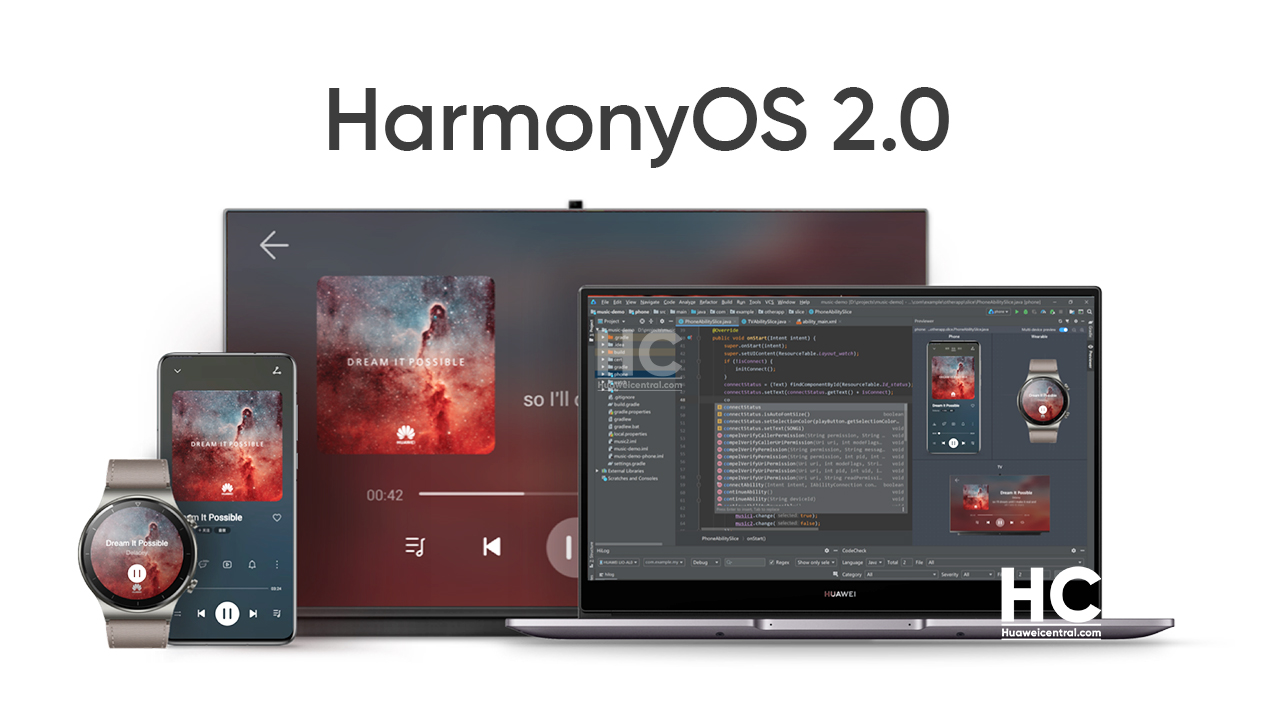HarmonyOS
HarmonyOS 2.0 Developer Beta Features

On December 16, 2020, Huawei officially launched the HarmonyOS 2.0 AKA Hongmeng OS 2.0 mobile beta for the developers. This beta will open the way for HarmonyOS app ecosystem development and will help in the adaptation process.
Initially, Huawei started to test HarmonyOS 2.0 on Huawei P40, Mate 30, and MatePad Pro devices in China and will expand to more devices once its testing finishes in 2021.
By looking at the beta, it’s found that HarmonyOS 2.0 mobile developer beta looks basically the same as EMUI 11 but has implemented a performance boost with HarmonyOS 2.0 kernel. This release also replaces the Android + EMUI system with HarmonyOS 2.0 + EMUI duo.
However, we can still wait for an official/stable release of HarmonyOS 2.0 for mobile devices and see if there are any major changes made to the user interface or user experience.
In the meantime, we’re here to discuss the features and development tools that developers will get to test while developing apps for HarmonyOS 2.0.
HarmonyOS 2.0 Developer beta Features:
- More than 50 new UI components for developing HarmonyOS applications on smartphones, offering consistent UI interaction experience across devices
- HarmonyOS application framework applicable to smartphones, enabling fast migration, connection, transferring, and installation-free loading of HarmonyOS applications across various devices
- Development and compilation toolchain available for the Windows and macOS platforms, helping you quickly develop HarmonyOS applications
- More than 40 sets of sample code for your reference in developing smartphone applications so that you can quickly understand how to use HarmonyOS APIs
- Distributed capability APIs (such as multi-modal awareness) to detect multiple mobility states
- Standardized input method framework and capabilities for you to develop multiple input methods and functions
- Standardized telephony system capabilities
- Comprehensive accessibility development framework for you to easily develop accessibility applications
- Standardized distributed data management capabilities to synchronize data between devices in real-time via distributed DB APIs
- Enhanced account system capabilities to cover devices without accounts in the HarmonyOS distributed system
HarmonyOS 2.0 developers will also get access to Huawei DevEco Studio 2.0 Beta 3. DevEco Studio helps you to develop all scenario, cross-device, distributed multi-device applications. It also provides debugging and simulation for speedy app development. To get DevEco Studio 2.0 Beta 3, visit HarmonyOS DevEco Studio from the official website.
We’ll continue to explore more changes and keep you posted.







